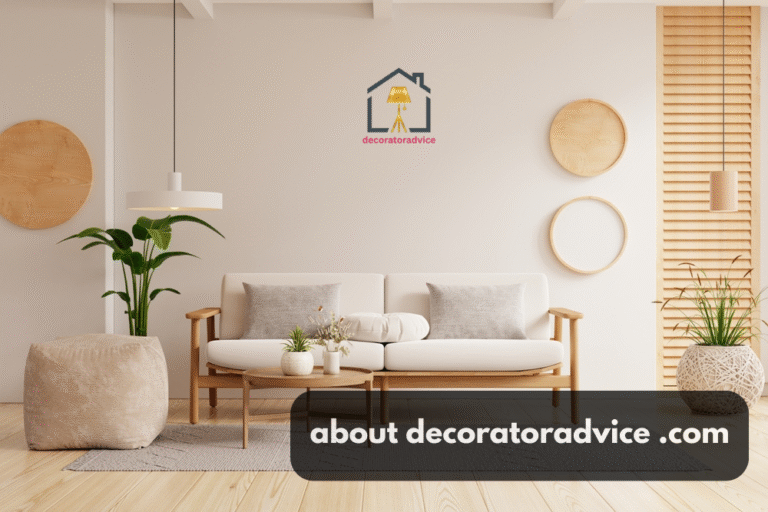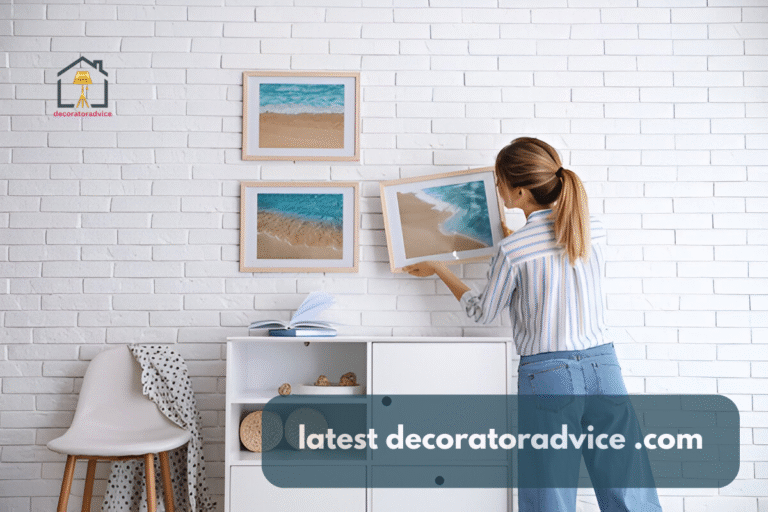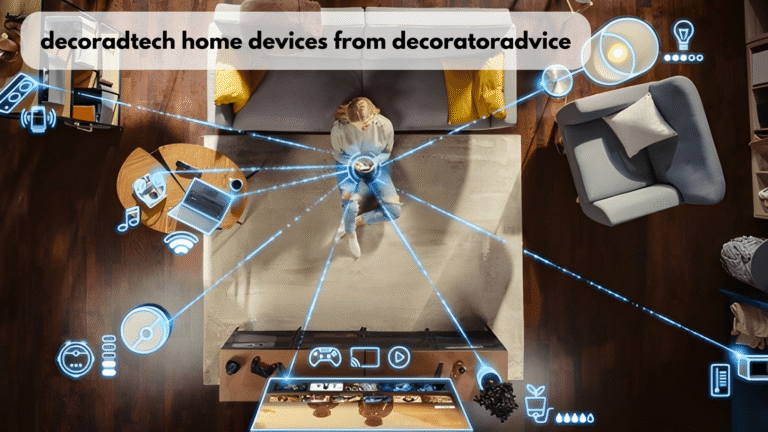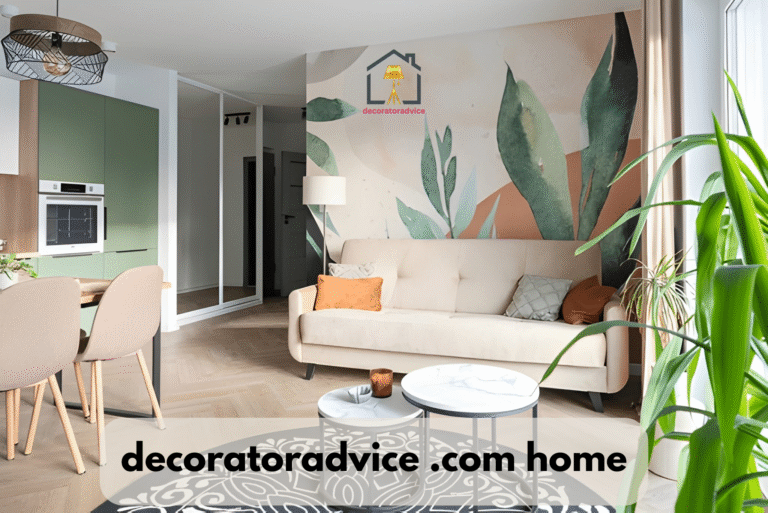decoratoradvice.com Decorating Tips You Can Trust
Although it may be thrilling, decorating a house can sometimes be very daunting. Too many guides online promise perfect results with quick fixes that rarely work. The truth is, real decorating happens slowly. It requires a thorough understanding of the way you are living in your area as well as trial and error. That’s where decoratoradvice.com comes in. It’s built around practical tips that fit real homes, not just glossy photos.
In this guide, I’ll share decorating ideas that feel simple, grounded, and lasting. We’ll walk through how to plan a room, how to use light better, and how to choose colors without second-guessing yourself. I’ll also cover furniture placement, storage solutions, and ways to make your house feel personal. By the end, you’ll have a roadmap to decorate with confidence, using advice you can actually trust.
Why decoratoradvice.com Matters

Plenty of blogs exist, but most recycle the same “top ten” lists without real thought. decoratoradvice.com focuses on details that make homes livable. It isn’t just about what looks nice in a photo. It’s about flow, comfort, and decisions you won’t regret in five years.
When people search for decoratoradvice .com home, they expect more than quick trends. They want dependable guidance. That’s why decoratoradvice stands apart. Whether you’re outfitting a huge family home or a studio apartment, it speaks to ordinary life.
For American homeowners, that balance matters. Open-plan houses, compact apartments, and suburban family homes all have different needs. A one-size guide doesn’t work. That’s why advice from decoratoradvice.com feels useful. It’s based on spaces people actually live in.
Start With a Plan
The biggest decorating mistake is buying things without a plan. A sofa looks great in a store but feels too large when it lands in your living room. A bold rug can dominate a room if you haven’t measured properly.
Before you buy anything, map out the space. Draw it on paper or use free online tools. Note door swings, windows, and outlets. Ask yourself what the room is for. Is the living room for quiet nights, or do you entertain often? The answers will shape every choice.
decoratoradvice.com recommends taking measurements twice. It prevents costly returns and disappointment. Once you’ve got a plan, decorating becomes smoother because you’re not guessing.
Choosing Colors That Last
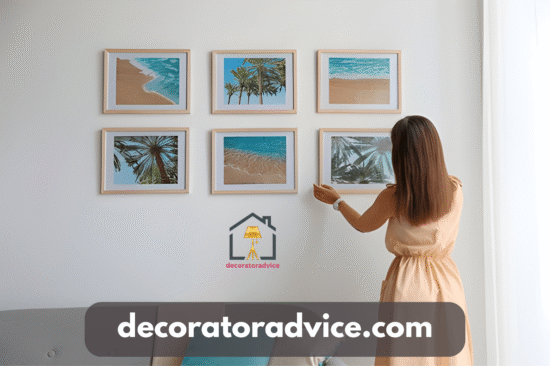
Color sets the mood in any room, but it’s easy to go wrong. Trends push bold shades that fade quickly in appeal. What works in a magazine doesn’t always feel comfortable day after day.
A safe approach is starting with neutrals. Whites, grays, and soft beiges make a good base. You can then layer in accents with pillows, artwork, or smaller pieces. That way, changing the mood later is easy and affordable.
For those who want color on the walls, think about light. A dark navy may look rich in daylight but feel heavy at night under lamps. about decoratoradvice .com often reminds readers to live with samples for a week. Colors look very different at noon compared to late evening.
Lighting Makes the Room

Light shapes how we see everything else. Without good lighting, even the best furniture feels flat. The trick is layering. One ceiling fixture isn’t enough.
You’ll want a mix of overhead lights, task lights, and ambient lamps. For example, in the living room, overheads handle general brightness, floor lamps create coziness, and table lamps help for reading.
Here’s a quick table for reference:
| Lighting Type | Best Use | Example Placement |
| Overhead | General visibility | Ceiling fixtures in kitchen or living room |
| Task | Focused work | Desk lamps, under-cabinet kitchen lights |
| Ambient | Mood setting | Floor lamps, wall sconces |
| Accent | Highlighting | Spotlights on art, strip lights for shelves |
Homes often have large windows but don’t rely only on daylight. Winter evenings are long, and layered lighting makes a home feel warm and safe.
Furniture That Fits the Space
Buying oversized furniture is a common problem. Big sectional sofas swallow small rooms. Dining tables too wide make movement awkward. The best tip is simple: scale matters more than style.
Measure your clear walking paths. Aim for at least three feet of open space around large furniture. It maintains a breathable atmosphere throughout the space. When it comes to apartments, you must select multifunctional furniture. A coffee table with shelves or a seat that can be used as storage can free up space without becoming cluttered.
Decoratoradvice .com partners often highlight how crucial furniture placement is. Even expensive pieces fall flat if they overwhelm a room.
Room-by-Room Guidance
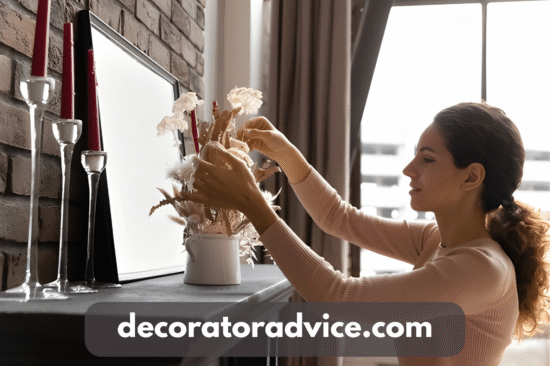
Every space has its quirks. Here’s how to approach them:
- Living Room
Balance comfort with layout. Anchor the room with one main seating piece, then layer smaller chairs or ottomans. Avoid pushing furniture against walls unless the room is very tight.
- Kitchen
Function first. Clear counters, proper lighting, and within-reach storage are more important today than trendy finishes. Open shelves seem excellent but can quickly become cluttered if not monitored.
- Bedroom
Keep it calm. Neutral walls, blackout curtains, and soft lighting create rest. Storage under the bed works well in smaller homes.
- Bathroom
Don’t crowd it. Choose mirrors that bounce light and keep toiletries hidden. Small plants can add freshness without fuss.
- Entryway
This sets the tone for your home. Hooks for coats, a bench for shoes, and a tray for keys prevent chaos.
Room-specific choices make the whole house feel intentional. That’s the kind of thinking promoted by the latest decoratoradvice .com guides.
Storage That Works
Clutter ruins good design. It doesn’t matter how well you paint or place furniture if piles of things cover every surface. Storage should feel natural, not forced.
In living rooms, closed cabinets hide remotes, games, or books you don’t need daily. In kitchens, drawer organizers stop utensils from overflowing. Bedrooms benefit from wardrobes that use vertical space, not just floor space.
Think of storage as part of design. A woven basket in the corner is practical and adds texture. Shelves double as displays for personal items. https//decoratoradvice.com often advises blending storage into the look so it never feels like an afterthought.
Personal Touch Matters Most
A home feels complete when it reflects you. Family photos, travel souvenirs, or art you actually like will always outshine mass-produced decor. If a trend doesn’t suit your tastes, don’t follow it.
Americans often decorate with seasonal items, from fall pumpkins to winter wreaths. Done in moderation, these touches bring warmth without overwhelming the main design.
The point is simple. A house is not a display space. It is a location where things happen. decoratoradvice com reminds readers to decorate for themselves, not for likes online.
Common Mistakes to Avoid
- Buying everything at once. Rooms need time to grow.
- Ignoring lighting. It even makes the best furniture look bland without it.
- Following trends too closely. They become outdated quickly, making the price costlier in the long run.
- No measurements. Almost every regret starts with poor planning.
Errors are inevitable in the process, but avoiding these saves money and stress.
Home design feels easier when you have the right place to learn from, and that’s what https// decoratoradvice.com gives you. It’s a space built for people who care about how their homes look and feel. You’ll find simple guides, like decoration tips decoradhouse from decoratoradvice, that focus on comfort and style. For those planning upgrades, decoradhouse renovation tips from decoratoradvice share real, practical advice that works in everyday homes.
Final Word
Decorating isn’t about copying a style. It all comes down to creating a room that suits you. The best advice is always simple, honest, and tested in real homes. That’s what decoratoradvice.com delivers.
Whether you’re painting walls, choosing a sofa, or finding the right light, trust that small, thoughtful steps matter more than big, rushed ones. If you keep comfort, scale, and personal taste at the center, your home will not just look better, it will feel better too.


